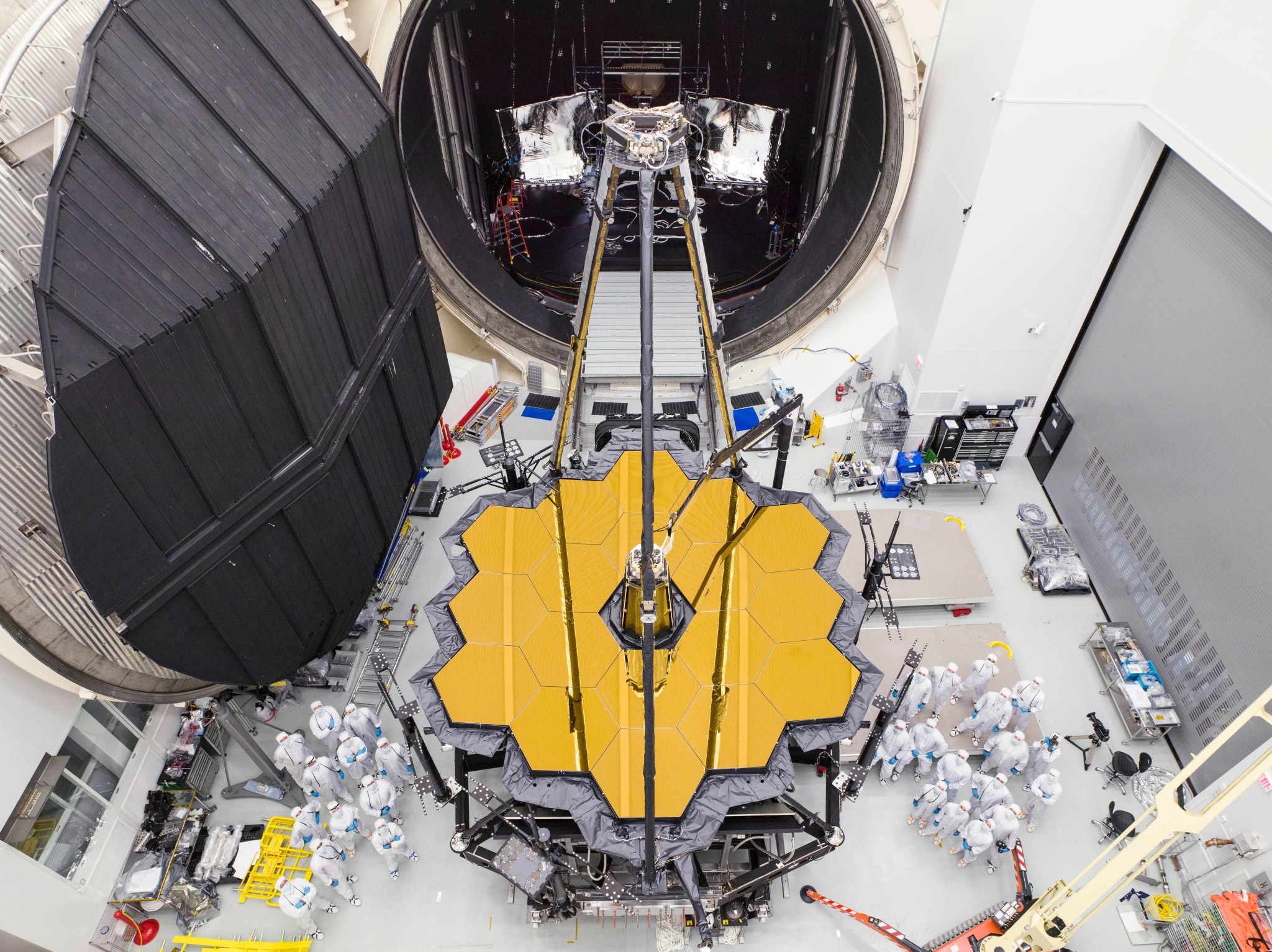With NASA’s James Webb Space Telescope’s approximately nine-month stay in Texas coming to an end, now is a good time to reflect on the memories it made in the Lone Star State. NASA has created a timelapse video that chronicles Webb’s time at NASA’s Johnson Space Center in Houston.
James Webb Space Telescope, or Webb, is the agency’s upcoming infrared space observatory, which will launch in 2019. It spent much of 2017 at Johnson, where it underwent critical cryogenic testing inside Chamber A, a massive thermal vacuum chamber at the center.
Credits: NASA’s Goddard Space Flight Center/Mike McClare
Webb arrived at Johnson in May 2017, inside a massive, specially designed shipping container called the Space Telescope Transporter for Air, Road and Sea (STTARS). Upon its arrival, engineers moved STTARS into the Chamber A cleanroom and carefully unpacked the telescope’s combined optical element and science instruments from it.
In June 2017, engineers deployed Webb’s primary mirror wings and secondary mirror tripod, which is the same configuration the optical element will have when it deploys in space. The engineers then loaded Webb on a platform designed to hold the telescope inside Chamber A, and slowly and deliberately moved Webb inside the chamber along a set of rails. Even with the chamber’s 40-foot (12.2-meter) diameter entrance, the fully extended secondary mirror tripod made it a tight fit for Webb.
Credits: Michael P. Menzel
On July 10, Chamber A’s colossal door closed, signaling the beginning of cryogenic testing. During approximately 100 days in the chamber, scientists and engineers at Johnson put Webb through a series of tests designed to ensure the telescope functioned as expected in an extremely cold, airless environment akin to that of space.
Before cooling the chamber, engineers removed the air from it, which took about a week. On July 20, engineers began to bring the chamber, the telescope, and the telescope’s science instruments down to cryogenic temperatures — a process that took about 30 days. Webb remained at “cryo-stable” temperatures for about another 30 days, and on Sept. 27, the engineers began to warm the chamber back to ambient conditions (near room temperature), before pumping the air back into it and unsealing the door.
Webb emerged from Chamber A on Dec. 1, riding out on the same rail system that carried it in.
The gamut of tests Webb has endured so far ensure it will safely reach its orbit at Earth’s second Lagrange point (L2) and be able to successfully perform its science mission. In early 2017, Webb underwent vibration and acoustic testing at NASA’s Goddard Space Flight Center in Greenbelt, Maryland, which showed the telescope will survive the rigors of launch. Among the tests performed on Webb inside Chamber A was an important alignment check of the telescope’s 18 primary mirror segments, to make sure all of the gold-plated, hexagonal segments acted like a single, monolithic mirror in a space-like environment. This test also showed Webb’s science instruments were properly aligned with its mirrors and could detect simulated “starlight” within the chamber.
Webb’s combined science instruments and optics next journey to Northrop Grumman Aerospace Systems in Redondo Beach, California, where they will be integrated with the spacecraft element, which is the combined sunshield and spacecraft bus. Together, the pieces form the complete James Webb Space Telescope observatory.
The James Webb Space Telescope is the world’s premier infrared space observatory of the next decade. A barrier-breaking mission for engineers and astronomers, Webb will solve mysteries of our solar system, look beyond to distant worlds around other stars, and probe the mysterious structures and origins of our universe and our place in it. Webb is an international program led by NASA with its partners, the European Space Agency (ESA), and the Canadian Space Agency (CSA).
For more information about the Webb telescope visit: www.webb.nasa.gov or www.nasa.gov/webb



























